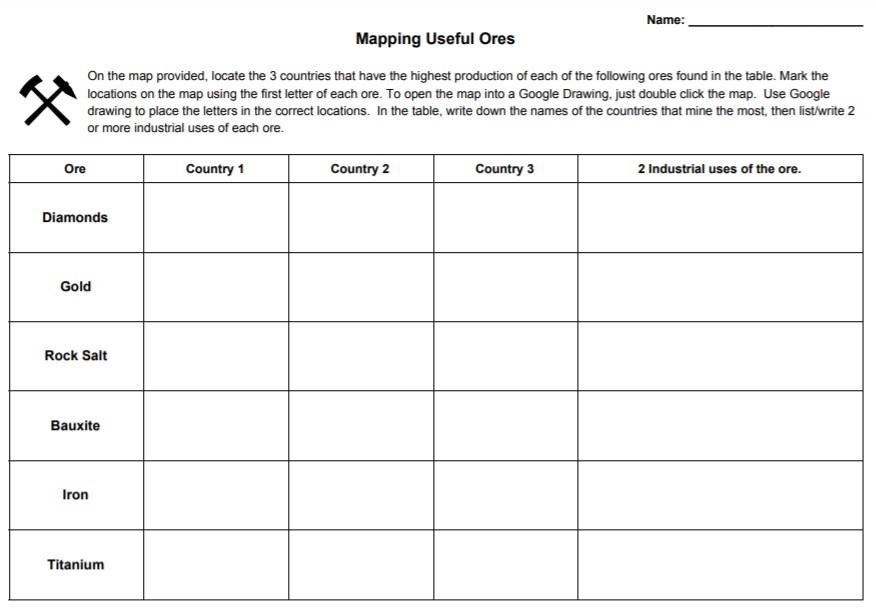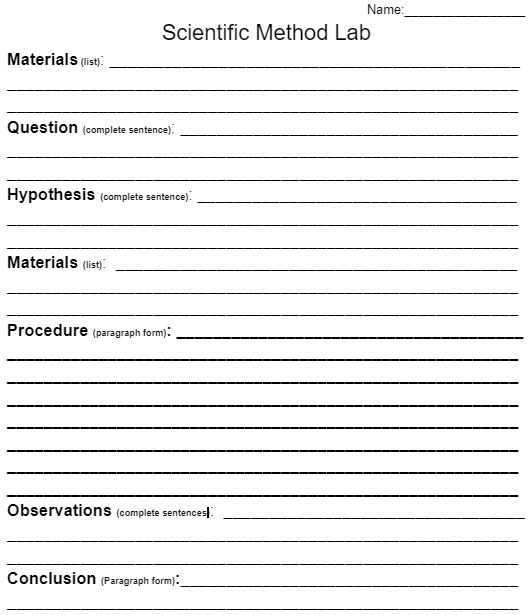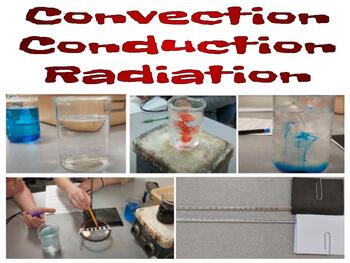Metamorphic Parent Rocks Image
Image

This image was designed to demonstrate how sandstone ends up as gneiss, a metamorphic rock. It follows the sequences of: sandstone, quartzite, shale, slate, phylite, schist, and gneiss.

This image was designed to demonstrate how sandstone ends up as gneiss, a metamorphic rock. It follows the sequences of: sandstone, quartzite, shale, slate, phylite, schist, and gneiss.

In this assignment, students will open up a Google Doc, you can have it printed as well, and fill out a table of some very useful industrial ores. The ores that will be researched are diamonds, gold, rock salt, bauxite, iron, and titanium. Students will research which 3 countries in the world are the top producers of each ore. They will then find and write 2 or more industrial uses for each ore. As they are doing their research, students will also use a map and mark where these countries are. This is great to reinforce the geography standards.

This is a scientific method lab sheet geared to merge a science experiment with grammar by using complete sentences.
This video explores the majesty of some of the diverse landscapes in Arizona.
This is an amazing video that takes the viewer on a fantastic voyage to observe the majesty of the nature of the Earth. This video can be used to explore physical geography or geoscience also.
This is a brief educational video on the geography (including location, size, and regions) of the United States.
This is a good video to help introduce or reinforce differing physical and cultural regions within Arizona.

In this assignment, students will open up a Google Doc, you can have it printed as well, and fill out a table of some very useful industrial ores. The ores that will be researched are diamonds, gold, rock salt, bauxite, iron, and titanium. Students will research which 3 countries in the world are the top producers of each ore. They will then find and write 2 or more industrial uses for each ore. As they are doing their research, students will also use a map and mark where these countries are. This is great to reinforce the geography standards.

In this Earth Science or Physical Science lab, students will gain an understanding of the three types of thermal energy transfer, conduction, radiation, and convection. Students will use hot, cold, and room temperature water to demonstrate convection by using food coloring. Students will then see how long chocolate chips take to melt when you add heat to just one side of some tin foil. Finally, they will use heat lamps, thermometers, and dark and light-colored papers to demonstrate radiation and the absorption of radiated heat.

In this lab I have students observe what happens to water, which represents air, warms up and what happens to water as it cools down. Using a hot plate, a large glass cake pan, a bag of ice and food coloring can easily demonstrate how wind is formed. The demonstration can also be used in topics of high/low pressure, warm and cold fronts, mantle convection if you would like. The assignment, however, is for high and low pressure systems and wind.